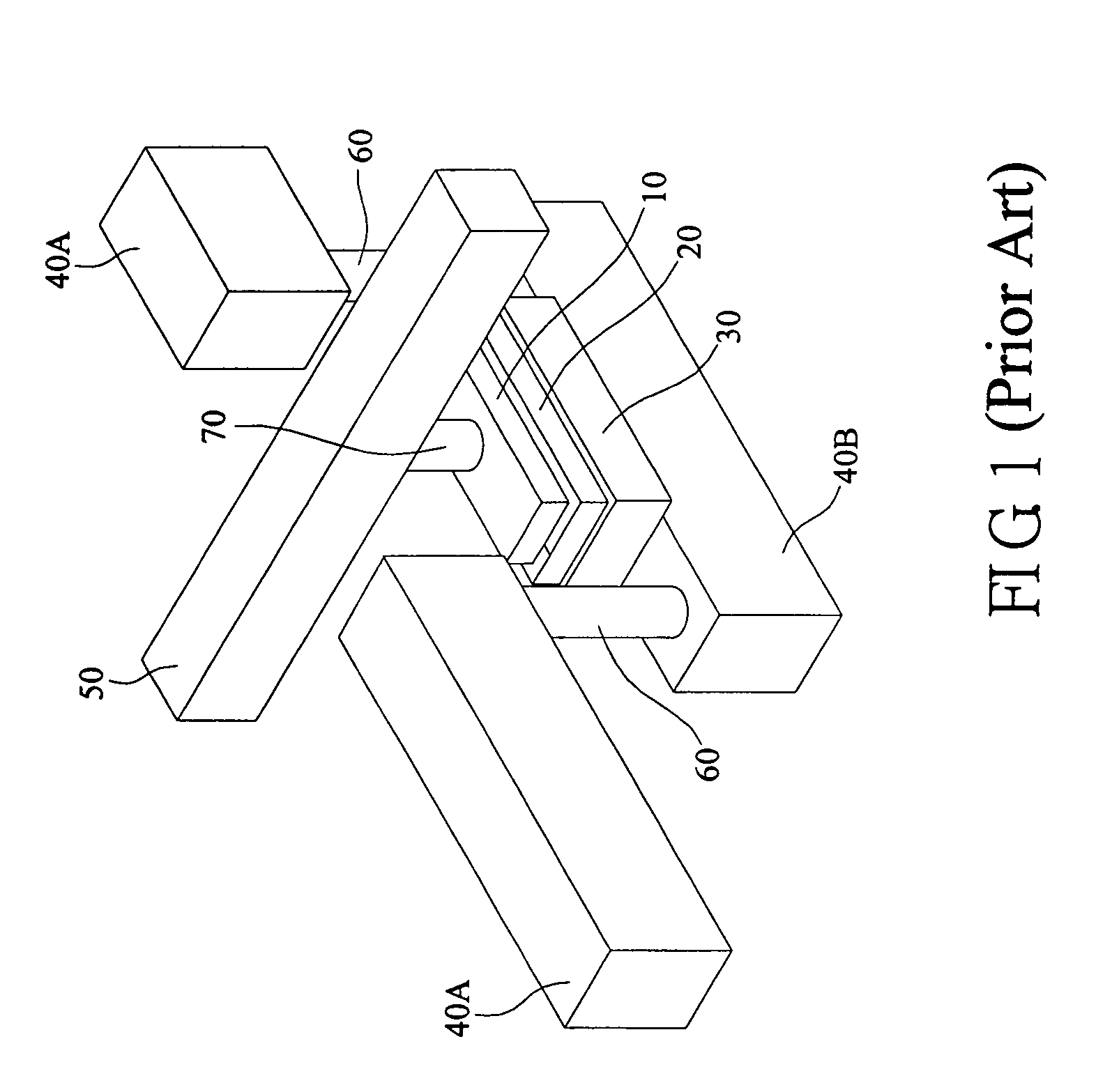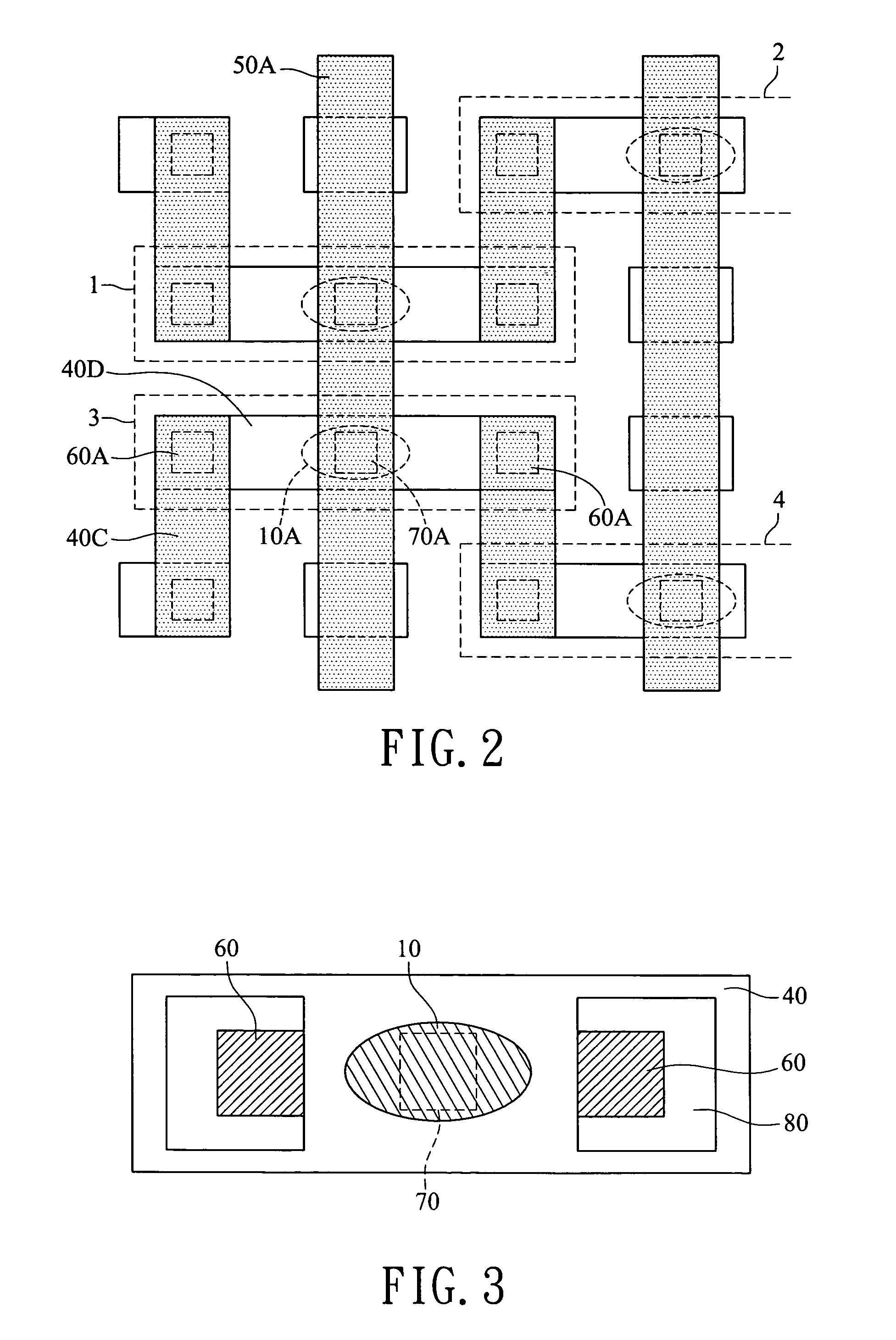High write selectivity and low power magnetic random access memory and method for fabricating the same
a random access memory and high write selectivity technology, applied in the field of magnetic random access memory (mram), can solve the problems of mram encountering electron migration problems and structure problems, and achieve the effects of reducing write current, low power consumption, and high write selectivity
- Summary
- Abstract
- Description
- Claims
- Application Information
AI Technical Summary
Benefits of technology
Problems solved by technology
Method used
Image
Examples
Embodiment Construction
[0019]To reduce negative interference of adjacent PWWL's on a MTJ, the invention employs the photo mask to arrange a PWWL and its PWWL's of write word lines with the same electrical currents flow in an interleaving fashion.
[0020]FIG. 2 shows the mask layout of a MRAM. As shown in the drawing, it contains magnetic memory cells 1, 2, 3, 4. The magnetic memory cell 1 and the magnetic memory cell 2 are next to each other; likewise, the magnetic memory cell 3 and the magnetic memory cell 4 are next to each other. Each memory unit has a magnetic tunnel junction cell 10A, an upper layer write word line 40C, a lower layer write word line 40D, a PWWL 60A, and a middle metal pillar 70A. The memory unit 1 and the memory unit 3 are controlled using the bit line 50A. The magnetic tunnel junction cell 10A further contains a lower electrode (not shown) to form a MTJ. The magnetic memory cell 1 and the magnetic memory cell 2 are affected under the current-induced magnetic field of the same write wo...
PUM
 Login to View More
Login to View More Abstract
Description
Claims
Application Information
 Login to View More
Login to View More - R&D
- Intellectual Property
- Life Sciences
- Materials
- Tech Scout
- Unparalleled Data Quality
- Higher Quality Content
- 60% Fewer Hallucinations
Browse by: Latest US Patents, China's latest patents, Technical Efficacy Thesaurus, Application Domain, Technology Topic, Popular Technical Reports.
© 2025 PatSnap. All rights reserved.Legal|Privacy policy|Modern Slavery Act Transparency Statement|Sitemap|About US| Contact US: help@patsnap.com



